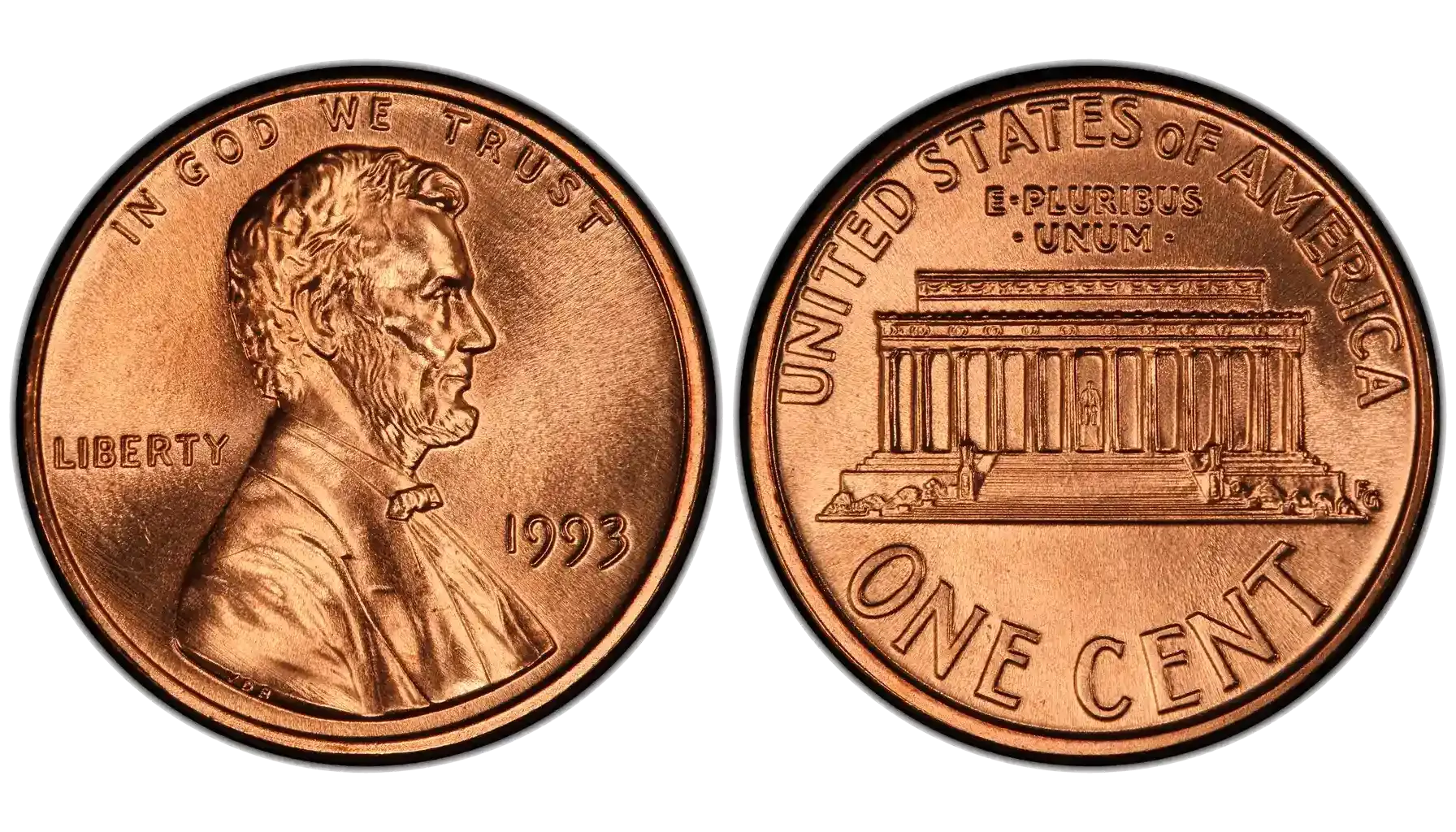Contents:
- Depression-Era America: The Story Behind the Coin
- What Makes the 1935 Mercury Dime Unique?
- Technical Specifications of the 1935 Mercury Dime No Mint Mark
- Grading and Value of a 1935 Dime: Overview
- Collector Tips: Identify How Much Is a 1935 Dime Worth Today
- Rarity Without the Premium Price
- Is the 1935 Mercury Dime a Good Investment?
Among classic American coins, few carry the artistic charm and historic relevance of the 1935 US dime. Minted during the shadows of the Great Depression, this coin continues to spark interest not only for its silver content but for its design, scarcity in higher grades, and place in American history.
Whether you're a long-time collector or simply exploring coins for investment or personal enjoyment, understanding the 1935 Mercury dime value is essential for making smart, informed decisions. Want to know is a 1935 dime worth anything? Grab a coin identifier app and keep reading the article.
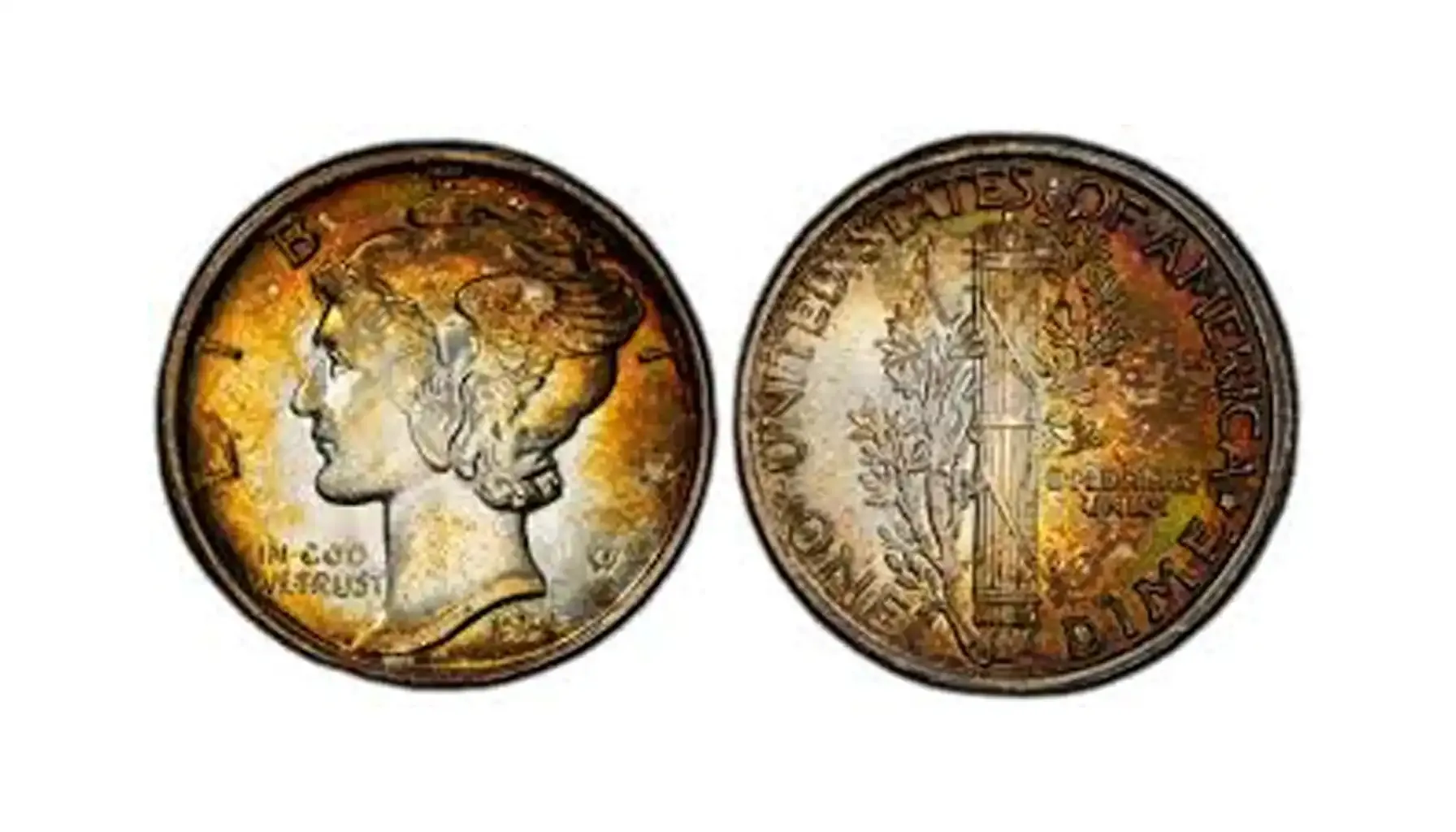
Depression-Era America: The Story Behind the Coin
To fully understand the liberty dime 1935 significance, it’s important to place it within its historical context. This year was part of the latter phase of the Great Depression, a period marked by widespread unemployment, economic uncertainty, and minimal discretionary spending. Coin production in this era reflected reduced demand for currency, and while 58.8 million dimes may seem plentiful today, this was a conservative output compared to both prior and subsequent minting booms.
In such times, coin collecting was not a priority for most Americans. That’s one of the reasons why relatively few 1935 dimes were preserved in pristine, uncirculated condition. Most were heavily circulated, used for basic daily purchases during a time when every dime truly counted. This adds a layer of emotional and historical weight to the coin—holding one is holding a piece of American resilience.
Even though it lacks the ultra-low mintage numbers of certain earlier or later Mercury Dimes, the 1935 issue—struck solely at the Philadelphia Mint—presents a unique opportunity. It combines affordability in lower grades with genuine scarcity in gem uncirculated conditions, especially those exhibiting Full Bands (FB) detail on the reverse. For this reason, it’s often seen as a “sleeper coin” in the 1935 dime no mint mark series—underrated, but packed with long-term 1935 w Mercury dime value potential.
Collectors today are drawn not only to its scarcity in higher grades but to its symbolism—a coin that survived one of the harshest economic eras in U.S. history. For many, this enhances the numismatic experience far beyond metal content and catalog 1935 dime value today.
What Makes the 1935 Mercury Dime Unique?
Where is the mint mark on a 1935 dime, you might ask while seeing it for the first time. This year’s dimes, however, weren't produced in San Francisco or Denver—only the Philadelphia Mint struck this issue, and it carries no mint mark. Its mintage total of 58,830,000 coins is not minuscule, but it is low when compared to booming production years like 1944 or 1943, where mintages often surpassed 100 million.
But the real 1935 dime coin value isn’t in its general availability—it's in the condition rarity. The vast majority of 1935 dimes in circulation show heavy wear, particularly on the high points of Liberty’s hair and the intricate fasces bands. High-grade specimens with sharp details and original luster are far less common, and those with Full Bands—a key indicator of strike quality—are especially elusive.
Did you know? Sometimes no mint mark is not a basic condition but a sign of a valuable dime with a mistake.
Technical Specifications of the 1935 Mercury Dime No Mint Mark
To clearly recognise the coin in any condition and understand what is a 1935 dime worth, let’s examine the technical aspects:
Feature | Detail |
Designer | Adolph A. Weinman |
Composition | 90% Silver, 10% Copper |
Weight | 2.5 grams |
Diameter | 17.9 mm |
Edge | Reeded |
Mint | Philadelphia (no mint mark) |
Mintage | 58,830,000 |
Because it's made of 90% silver, even heavily worn examples hold some intrinsic bullion value, which often provides a price floor regardless of collector demand.
Tip: Do you want to learn prices for other silver dimes? Here is a full guide for other years’ silver issues.
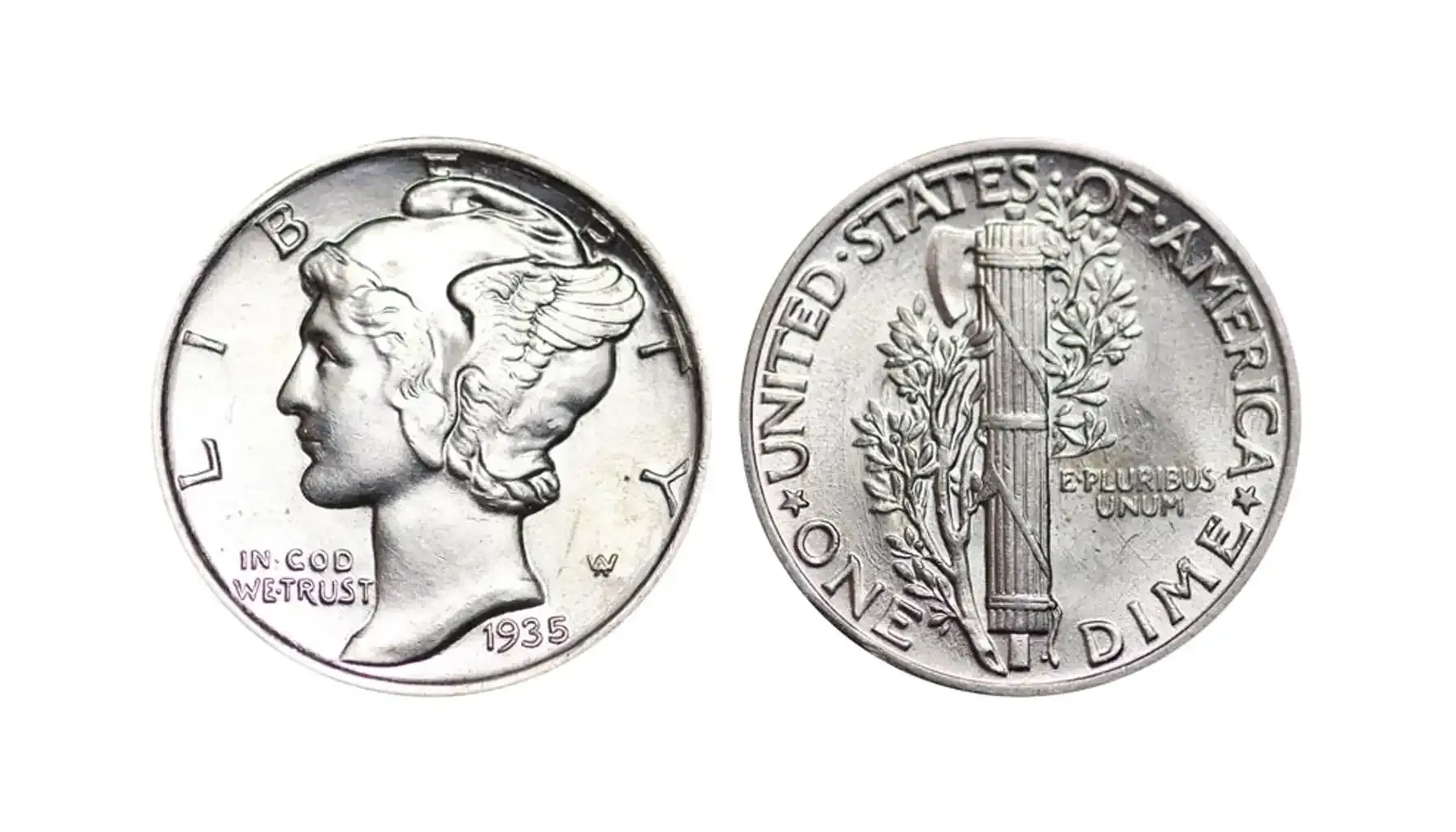
Grading and Value of a 1935 Dime: Overview
The grading scale for U.S. coins ranges from Poor (P-1) to Mint State (MS-70). For the expectedly rare 1935 dime, condition is everything. Here’s a general breakdown for value of 1935 dime as of 2025:
Grade | Estimated Price |
Good (G-4) | $2–$3 |
Fine (F-12) | $3–$4 |
Extremely Fine (EF-40) | $5–$7 |
About Uncirculated | $8–$12 |
Mint State (MS-60) | $15–$25 |
Gem MS (MS-65) | $40–$60 |
Superb Gem (MS-67+) | $200+ |
Note: 1935 liberty dime value can vary based on market fluctuations, silver prices, and grading authority. Coins with Full Bands designation (denoted as MS65FB, for example) can bring 2x to 5x more than regular mint state coins.
Why Full Bands Changes the 1935 D Mercury Dime Value
Collectors interested in a 1935 Mercury dime w mint mark place great emphasis on the Full Bands (FB) designation. This refers to the sharply defined horizontal lines across the fasces on the reverse of the coin. A coin can only qualify for Full Bands status if all bands are fully separated and clearly struck. This detail is particularly hard to find due to die wear and inconsistent strikes during production.
A 1935 dime graded MS66FB by PCGS or NGC, for instance, can sell for over $500 at auction depending on eye appeal and surface quality. These coins are considered premium collectibles and frequently appear on want lists for advanced collectors.
Strike Quality and the Importance of Full Bands
Not all coins are struck with equal sharpness, and that’s where the 1935’s issue begins to separate itself from more common dates. Although Philadelphia was generally known for producing coins with moderately strong strikes, the 1935 dime presents a challenge: many examples show softness in detail, especially in the central areas of the fasces and the diagonal crossbands on the reverse.
That’s why the Full Bands (FB) designation from grading services like PCGS and NGC plays such a pivotal role in 1935 s Mercury dime value.
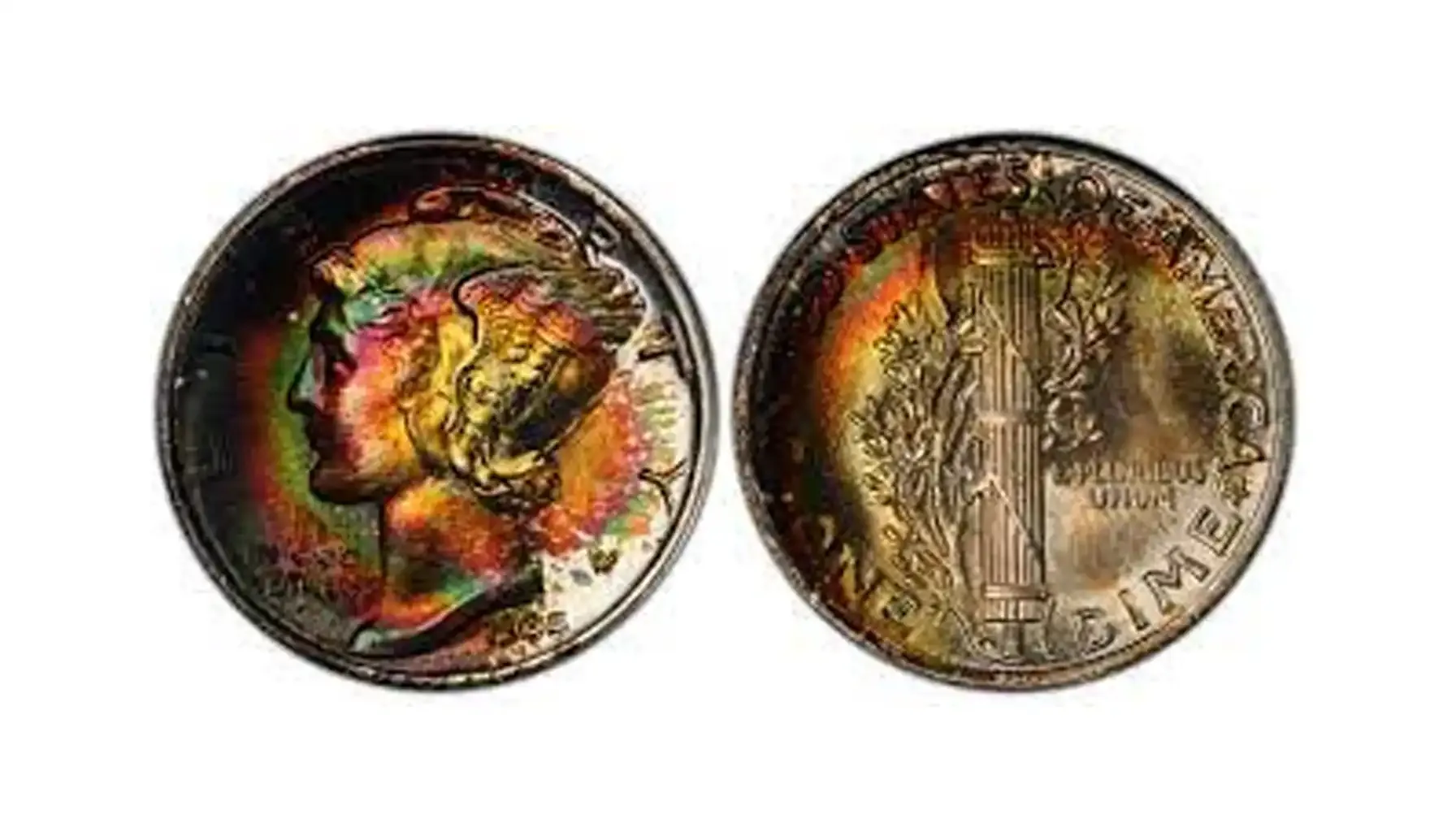
What Defines Full Bands?
To qualify for the Full Bands designation:
The central horizontal bands on the fasces must be completely separated, with no breaks or flat spots.
The strike must be well-centered and crisp, particularly on the reverse.
This level of detail reflects a fresh die and optimal striking pressure, which makes these coins not just rarer—but more desirable.
Value of 1935 Mercury Dime: Full Bands vs. Non-FB Coins
Grade | Regular Strike | Full Bands |
MS-64 | $35–$40 | $90–$120 |
MS-65 | $40–$60 | $150–$200 |
MS-66 | $85–$110 | $300–$400 |
MS-67 | $200+ | $600+ |
This stark contrast highlights how a tiny design detail—often missed by beginners—can multiply a dime 1935 coin value several times over.
Collector Tips: Identify How Much Is a 1935 Dime Worth Today
If you're serious about collecting or relying on the 1935 s dime value, here’s how to narrow your search for top-tier specimens:
1. Examine the Reverse Carefully
Use a magnifier or loupe (minimum 10x) to closely inspect the fasces and bands. Look for crisp, full separation of the central bands to identify a possible FB candidate.
2. Check for Original Luster
Uncirculated 1935 dimes should exhibit cartwheel luster—a reflective sheen that moves as the coin is tilted. Dull or cleaned coins lose much of the Mercury dime 1935 value.
3. Is There a 1935 Dime Error? Check It Out
If you feel that there is something unusual about this coin, like the size, or the color, or the letters — you might be holding a 1935 Mercury dime error. This year’s production is not famous for dramatic and legendary mistakes, but certain anomalies happen anyway, and they can raise the 1935 d dime value seriously.
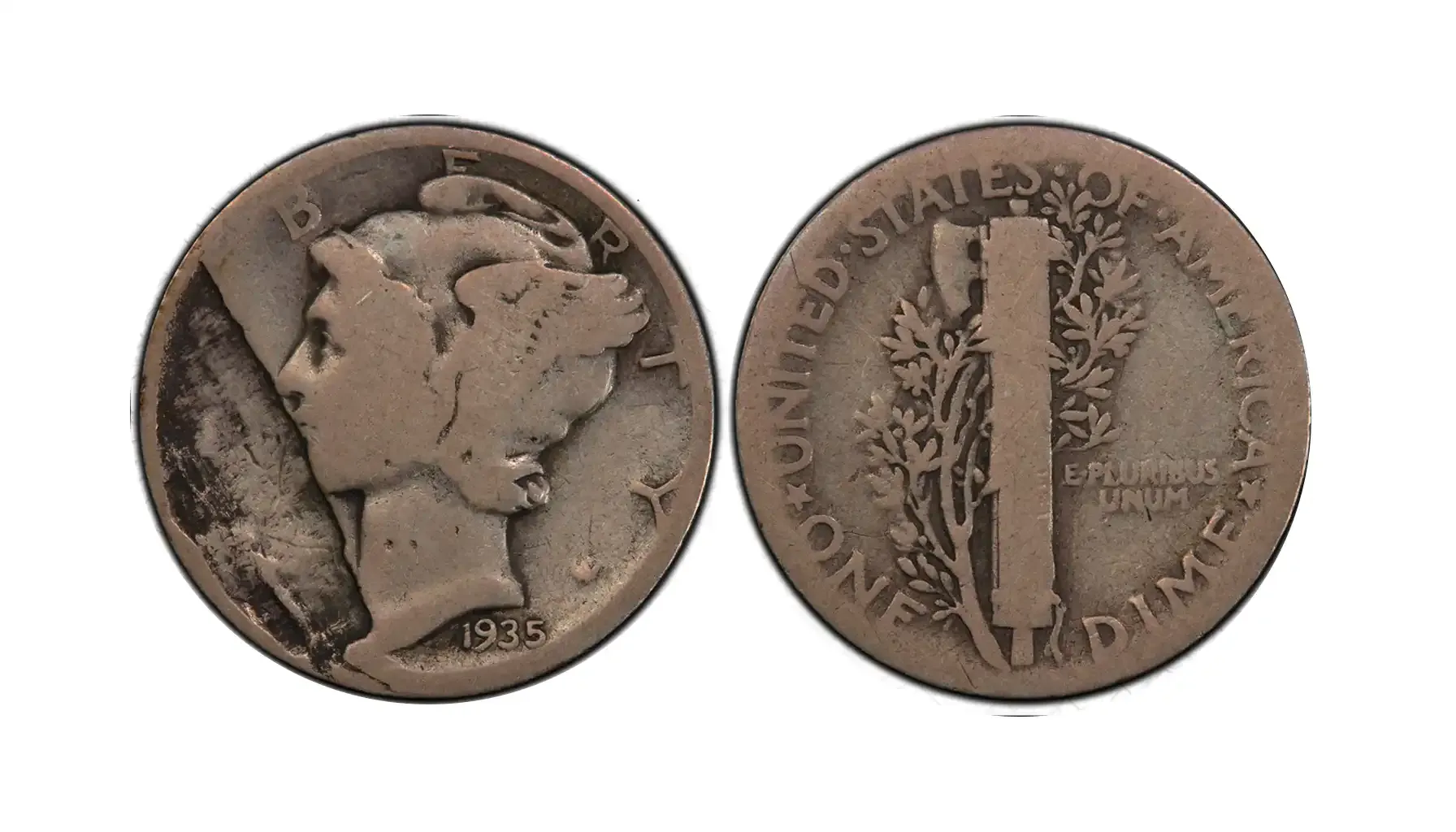
3. Surface Preservation Matters
Contact marks, especially on Liberty’s cheek or the fasces, lower the grade. Look for clean fields, well-defined details, and minimal abrasions.
4. Seek Certified Coins
Due to the proliferation of counterfeits and altered coins, collectors should prioritize those graded by top-tier services:
PCGS (Professional Coin Grading Service)
NGC (Numismatic Guaranty Company)
These third-party graders ensure authenticity, offer consistent grading standards, and make resale or auctioning far easier.
5. Know Where to Buy
Buy from reputable dealers, major auction houses, or certified coin shows. Many online marketplaces exist, but due diligence is key—request high-resolution photos, ask about return policies, and verify credentials.
Advised article: Here is a full guide on US half dimes, their prices and stories behind them. Keep educating yourself!
Rarity Without the Premium Price
One of the most attractive qualities of this year’s issue is its collectibility without overwhelming cost. This coin is often a gateway for new collectors into the Mercury series. In circulated grades, it remains extremely affordable—sometimes available for the price of a fast-food meal. Yet, if you’re aiming to build a complete Mercury Dime set, finding a high-grade 1935 with Full Bands will be a real challenge, especially in MS66 or MS67.
This balance—of historical significance, moderate availability, and high-grade rarity—makes it one of the most balanced coins in U.S. numismatics in terms of price-to-interest ratio.
Is the 1935 Mercury Dime a Good Investment?
Yes—but with conditions. It is not a speculative moonshot, but it holds several qualities that make it a sound long-term asset:
Pros
Intrinsic silver content provides a bullion floor.
Historic context gives it storytelling power for collectors.
Affordable in low grades, yet desirable in high grades—making it ideal for budget collectors and advanced investors alike.
Full Bands scarcity allows for strong price growth when quality specimens are discovered.
Cons
Non-FB circulated examples are common, meaning low-end coins offer minimal appreciation potential.
Market saturation can suppress prices in average grades, especially during periods of silver volatility.
For the best returns, focus on certified, high-grade, Full Bands examples. These coins are always in demand and continue to appreciate steadily, especially as more collectors pursue registry sets and competition grows for top pops.
This 10-cents coin proves that numismatics is about far more than face 1935 silver dime value. Behind each one lies a story—of American resilience during the Great Depression, of evolving minting technology, of the artistry of Adolph Weinman, and of the collector’s enduring hunt for beauty, rarity, and history.
For beginners, the 1935 issue offers a low-cost entry point into a legendary series. For seasoned collectors, it presents a challenge in the form of Full Bands rarity. And for investors, it’s a stable, silver-backed asset with room to grow—especially in high-end grades.
Before you buy, sell, or store your 1935 Mercury Dimes, understand how much is a 1935 Mercury dime worth reliably, check for Full Bands, and consider certification to identify the coins correctly.

